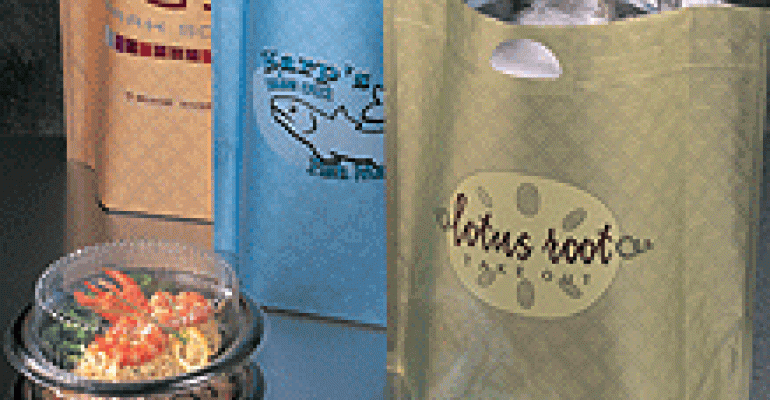By Joseph Pounder
 |
 |
Over the past several years there has been growing awareness among operators and customers alike of the food safety factors associated with the movement of food "from farm to table." Takeout food that moves "from cafè to home" deserves the same level of attention.
Today, as increasing amounts of food are packaged "to go," single-use packaging plays a larger role than ever before. From temperature retention to contamination prevention, quality single-use packaging helps an operator safely prepare and manage "served" carryout within the business, and also helps eliminate risks associated with food safety once consumers take the food beyond your restaurant's doors.
There are four key packaging attributes you should consider to help promote a positive and safe takeout experience for customers. Employing single-use packaging that has these attributes will ensure the product is ready for the takeout R.I.D.E.
You should ask four key questions when considering the type of packaging you intend to use. Does the packaging:
Reheat safely? When selecting singleuse containers for takeout, choose packaging that can handle high temperatures safely. Consumers often reheat excessively in microwaves, and packaging that can't handle the heating and reheating can sometimes pose various risks. Certain takeout packaging materials can also withstand low amounts of oven heat, which provides consumers with an additional reheating method. In either case, check specs carefully.
Insulate properly? Packaging that has appropriate insulation characteristics will help keep hot food hot and cold food cold. Both extremes minimize the growth of potentially harmful organisms. Also, look for single-use packaging that provides a tight seal and an audible signal or click that indicates it is securely closed. Covered packaging will further help keep food insulated, as well as minimize the potential for contamination of food by airborne contaminants or via contact with contaminated surfaces.
Deliver durability? Single-use packaging should be durable and provide performance qualities that ensure safe usage. For example, is the packaging "cold-tolerant" and able to withstand reasonably extended refrigerator storage? Is it "soak proof" so that it retains its integrity when holding product that contains or may release liquids? Both of these features can help reduce chances of spoilage and/or exposure to contaminants.
Educate consumers? Even as operators rush to take advantage of the demand for takeout foods, many do not consider the advantage of labeling their to-go packages with food-safety instructions. Packaging that provides valuable "real estate" for personalized labeling allows operators to include this kind of information. Adhesive labels can be easily created by operators and stuck to takeout packaging, offering important handling lessons to guests about various products or carryout meals; they can also offer reheating instructions and suggested refrigerating temperatures. (For tips, visit the American Dietetic Association at www.eatright.org).
From the operators' perspective, single-use packaging has other equally important functions. In addition-to selecting packaging that can pass the consumer R.I.D.E. test, what else should operators consider when trying to find packaging that eases their food safety takeout preparation and business needs?
Select packaging that is easy to use. Food safety risks rise the longer food sits around uninsulated and unprotected. Simple packaging allows an operator to get the food into the package quickly. In addition, packaging solutions should be selected to match the actual food being packaged—the more complicated the packaging, the higher the probability that it won't be closed, sealed or transported correctly.
Consider a packaging solution's "total cost," not just its unit price alone. Total cost in use includes unit price but also accounts for: a product's contribution to food safety and quality assurance; its convenience for the operator and consumer; its "efficiency" in terms of the labor required to use it; ease and accuracy of ordering it; and the simplification of operation and space utilization within the operation.
An operator who ensures that food is handled safely within his or her facility, and transported safely by consumers beyond its business doors, will find that these efforts contribute to a lasting, positive relationship between the consumer and an operation's brand. In this way, single-use packaging supports both food safety and marketing objectives at the same time.
Joseph Pounder is a product development manager for Dixie Foodservice.





